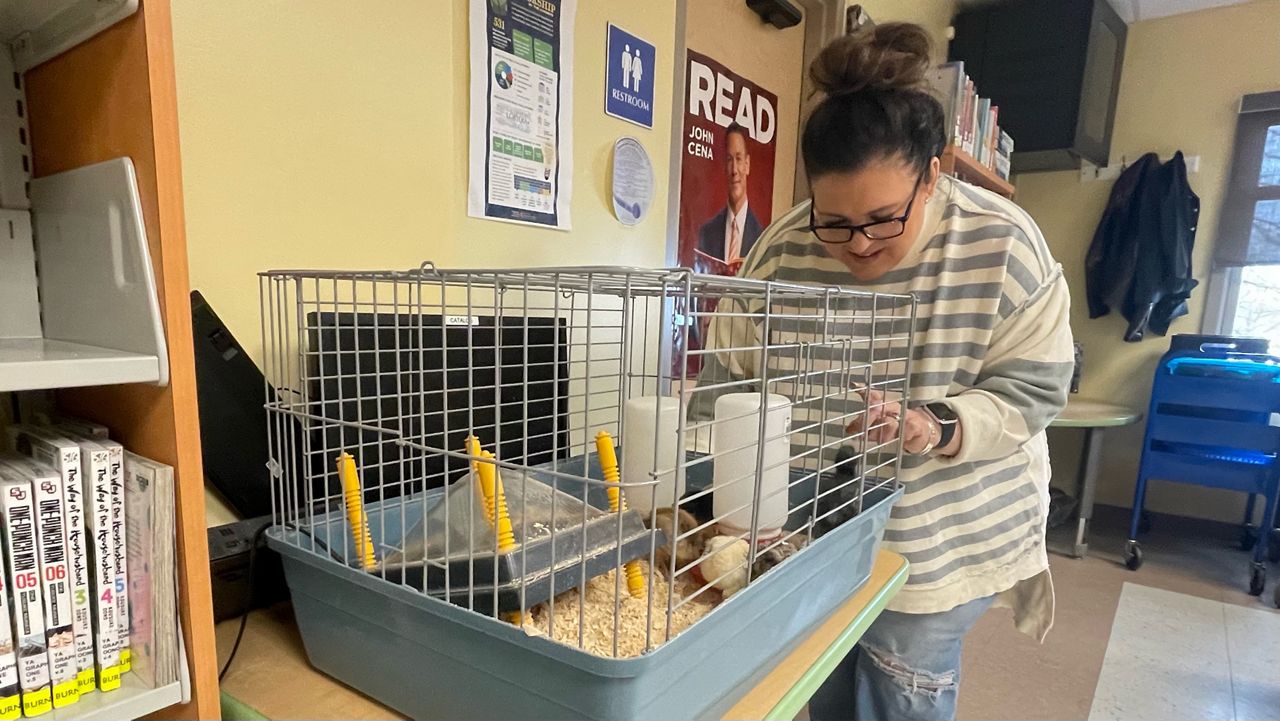Paws for Thought: The Benefits of Animals in Libraries
In recent years, libraries have explored innovative ways to engage patrons and create a welcoming environment. One unconventional approach that has gained popularity is the inclusion of animals in libraries. From raising baby chicks to having a resident library cat or a soothing fish tank, the presence of animals has been shown to offer numerous benefits to library patrons of all ages. Let’s delve into how animals in libraries can enhance the overall experience, promote learning, and contribute to the well-being of visitors.
 Section 1: Raising Baby Chicks
Section 1: Raising Baby Chicks
One unique program that has captured the hearts of many library patrons is the raising of baby chicks. Recently, the Jefferson Public Library in Georgia introduced a program called “Chicken Week” where patrons could observe the hatching and growth of baby chicks (Hill, 2022). This hands-on experience not only provided an educational opportunity for children to learn about the life cycle of chickens but also fostered a sense of responsibility and empathy. Members of the public also enjoyed interacting with the fuzzy chicks. Such programs have been found to increase library visits, especially among families with young children, who are eager to witness the miracle of life firsthand.
Raising baby chicks in libraries also presents an opportunity for collaborative learning and community engagement. Patrons can share their experiences, ask questions, and learn from one another, strengthening social bonds within the library setting.
 Section 2: Library Cats
Section 2: Library Cats
Another popular trend in libraries is the presence of resident cats. Library cats have been around for decades, with some even gaining international fame, such as Dewey Readmore Books, the beloved library cat of Spencer Public Library in Iowa (Myron, 2008). These feline companions offer a calming presence and can help reduce stress and anxiety among library patrons.
Research has shown that interacting with animals can have therapeutic benefits, lowering blood pressure and releasing endorphins (Beetz et al., 2012). For students studying in libraries, taking a break to pet a friendly cat can provide much-needed relaxation and rejuvenation.
Library cats can also serve as a unique attraction, drawing in patrons who may not typically visit the library. The Litchfield Public Library in Illinois has a resident cat named Stacks, who has become a local celebrity and even has his own Facebook page (Litchfield Public Library, 2021). The presence of a library cat can create a more inviting and homely atmosphere, encouraging patrons to stay longer and explore the library’s resources.
Moreover, library cats can be particularly beneficial for patrons with special needs, such as those with autism or anxiety disorders. The love and non-judgmental nature of animals can provide a sense of comfort and security for these individuals (Carlisle, 2015).
Section 3: Fish Tanks and Other Animals
Beyond chicks and cats, libraries have also incorporated other animals into their spaces. Fish tanks, for example, have become a popular addition to many libraries. The Cascade Township Branch of Kent District Library in Michigan has a 385-gallon saltwater aquarium that was recently dedicated. The new cylindrical fish tank is 6.5 feet tall, 66 inches in diameter, and is sure to delight patrons young and old alike. (Katie, 2021). The mesmerizing beauty of the fish and the gentle bubbling sound of the tank create a soothing ambiance
that can help reduce stress and promote relaxation.
Fish tanks in libraries can also serve as an educational tool, providing opportunities for patrons to learn about marine life and ecosystems. It’s also relaxing to watch the fish swim around, brightly colored and glittering in their tank.
Other animals that have found their place in libraries include therapy dogs, which can help children with reading difficulties gain confidence and improve their literacy skills (Jalongo, 2018). The non-profit Paws & Think in Indiana has a program called “Paws to Read,” where children can read aloud to certified therapy dogs in a non-judgmental environment (Paws & Think).
Some libraries have even hosted more exotic animals, such as the Bull Run Library in Manassas Virginia, which invited patrons to meet and learn about a variety of reptiles and amphibians during their “Reptiles in Your Library!” event (Bull Run Library, 2023). Such encounters not only provide entertainment but also foster a sense of curiosity and appreciation for the natural world.
The inclusion of animals in libraries has proven to be a successful strategy for creating a more engaging and welcoming environment for patrons. From raising baby chicks to providing a home for resident cats, fish tanks, and other animals, libraries have embraced the benefits that these creatures can offer. The presence of animals can promote learning, reduce stress, and create a sense of community among library patrons.
As libraries continue to evolve and adapt to the changing needs of their communities, the incorporation of animals is likely to remain a popular trend. By offering unique experiences and opportunities for patrons to connect with nature and each other,
References:
Beetz, A., Uvnäs-Moberg, K., Julius, H., & Kotrschal, K. (2012). Psychosocial and psychophysiological effects of human-animal interactions: The possible role of oxytocin. Frontiers in Psychology, 3, 234. https://doi.org/10.3389/fpsyg.2012.00234
Carlisle, G. K. (2015). The social skills and attachment to dogs of children with autism spectrum disorder. Journal of Autism and Developmental Disorders, 45(5), 1137-1145. https://doi.org/10.1007/s10803-014-2267-7
Katie. (2021). A new 385-gallon Aquarium Dedicated at Cascade Twp. Branch of Kent District Library. https://kdl.org/blogs/post/new-385-gallon-aquarium-dedicated-at-cascade-twp-branch-of-kent-district-library/
Bull Run Library. (2023). Reptiles in Your Library! https://pwcgov.libnet.info/event/8388074
Jalongo, M. R. (2018). An attachment perspective on the child-dog bond: Interdisciplinary and international research findings. Early Childhood Education Journal, 46(4), 395-405. https://link.springer.com/article/10.1007/s10643-015-0687-4
Litchfield Public Library. (2021). Meet Stacks, the Litchfield Library Cat. https://litchfieldpubliclibrary.org/stacks-the-library-cat/
Myron, V. (2010). Dewey: The Small-Town Library Cat Who Touched the World. Grand Central Publishing.
Hill, C. https://georgialibraries.org/chickens/
Paws & Think. Paws to Read. https://www.pawsandthink.org/about/mission-vision/

